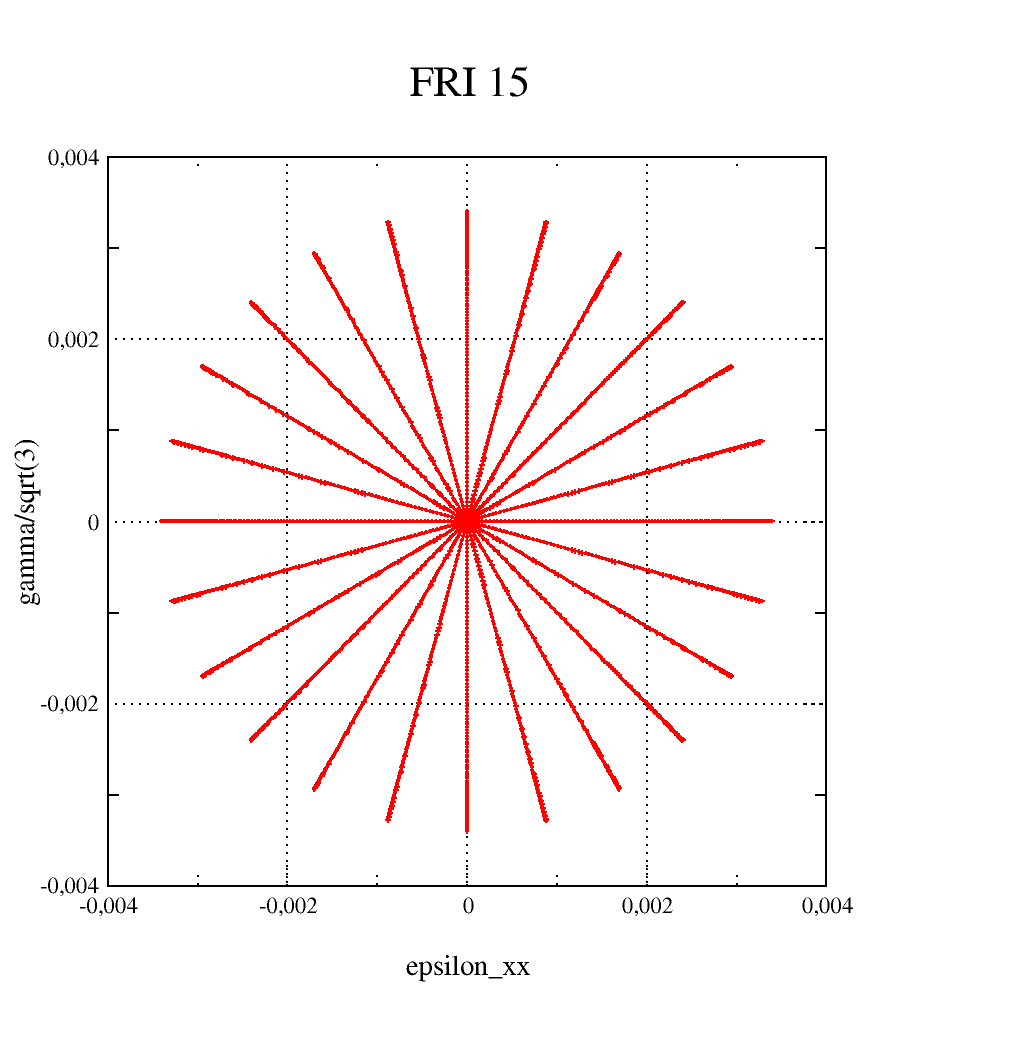1. Reference problem#
1.1. Geometry#
Hardware point
1.2. Material properties#
Isotropic elasticity \(E\mathrm{=}184000\mathit{MPa}\) \(\nu =0.3\)
Isotropic work hardening |
|||
R_0 |
\(97.83\mathit{MPa}\) |
B |
51.3 |
Memory |
|||
10 |
Q_0 |
\(\mathrm{-}86.2\mathit{MPa}\) |
|
ETA |
0.14 |
Q_M |
\(270.5\mathit{MPa}\) |
Kinematic work hardening (modeling A) |
|||
C1 |
182392 MPa |
G1_0 |
3079 |
C2 |
16678 MPa |
G2_0 |
178.7 |
Viscosity of LEMAITRE |
|||
UN_SUR_K |
\(1\mathrm{/}156.9{(\mathit{MPa}{S}^{1\mathrm{/}N})}^{\text{-1}}\) |
N |
6.84 |
Non-radiality effect |
|||
DELTA1 |
0.00306 2 |
DELTA2 |
0.01546 |
1.3. Boundary conditions and loads#
Non-proportional traction-torsional loading, with imposed deformation, with increments of 15 degrees, which amounts to a material point in imposing components \({\varepsilon }_{\mathit{xx}}\) and \({\varepsilon }_{\mathit{xy}}\), with a phase difference between these two components. For each angle, the cycles are symmetric.

The representation of the load in a \(\frac{2}{\sqrt{3}}{\varepsilon }_{\mathit{xy}}\) - \({\varepsilon }_{\mathit{xx}}\) plane is as follows:

To obtain an almost stabilized state, all of these cycles are applied 4 times.